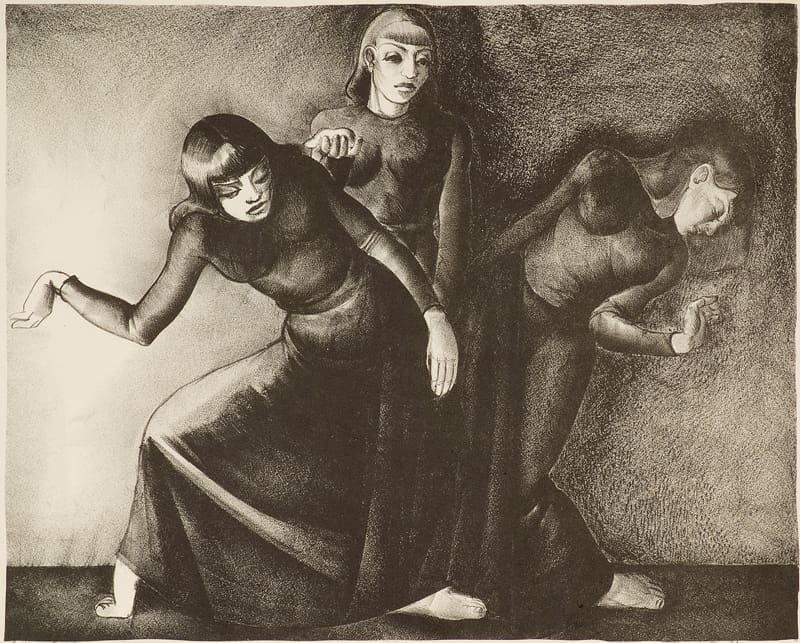
Honoré Guilbeau had early aspirations as a dancer, but soon after enrolling in classes at the Art Institute of Chicago, she shifted her focus to printmaking. Her thoughts were never far from dancing however, and she often featured dancers and theater scenes in her works.
In this print, the three dancers and their movements appear somewhat enigmatic. Their forms seem to emerge from the same core, yet they have separate upper bodies. Or, the figures could all represent the same dancer at different moments in time as she sweeps through her choreography. As a dancer herself, Guilbeau may have been intrigued by the challenge of depicting the movement of dance in the static visual medium of printmaking. The title of the work offers no additional clarity and indeed points to uncertainty itself. Is To Uncertainty an ode to a particular emotion Guilbeau felt at the time? Is it the title of a dance or performance she participated in or saw? Or, is it a comment on the image itself, for which no certain explanation is readily apparent?
What do you think these figures and their movements represent? What do you think that visual artists might gain by participating in other types of art, like dance or theater?
Guilbeau moved to Cleveland in the 1930s where she found work through the Works Progress Administration (WPA) art project, serving as a set and costume designer with the Cleveland Theater for Youth and continuing her work as a printmaker. Guilbeau made this print as part of a series depicting dancers for the WPA art project. Many of her other prints were also included in the “Print-a-Month” series, a subscription service through the Print Makers Club of Cleveland that sent a monthly etching, lithograph, or woodcut to its members. The Akron Art Museum counts a number of these “Print-a-Month” works among its collection, not only from Guilbeau but from other leading Cleveland-area artists as well.
In 1939, Guilbeau and her family moved to a farm in Peninsula, OH, a small town situated between Akron and Clevleand in the Cuyahoga Valley National Park. Guilbeau transformed their barn into an art school for children and helped form the Peninsula Players theater group, for which she also danced, designed sets, and made costumes. From the 1940s on, Guilbeau dedicated her time to numerous activities in the arts and literature. She taught at the Akron Art Institute (now the Akron Art Museum) for several years and later worked as a book illustrator, producing drawings for A Connecticut Yankee in King Arthur’s Court as well as a series of children’s books with Cleveland author Ethel Collier. Guilbeau was also instrumental in establishing the Peninsula Library, where her pebble mosaic Mural of Transportation in the Valley can still be found on the exterior wall just next to the library’s front door.

